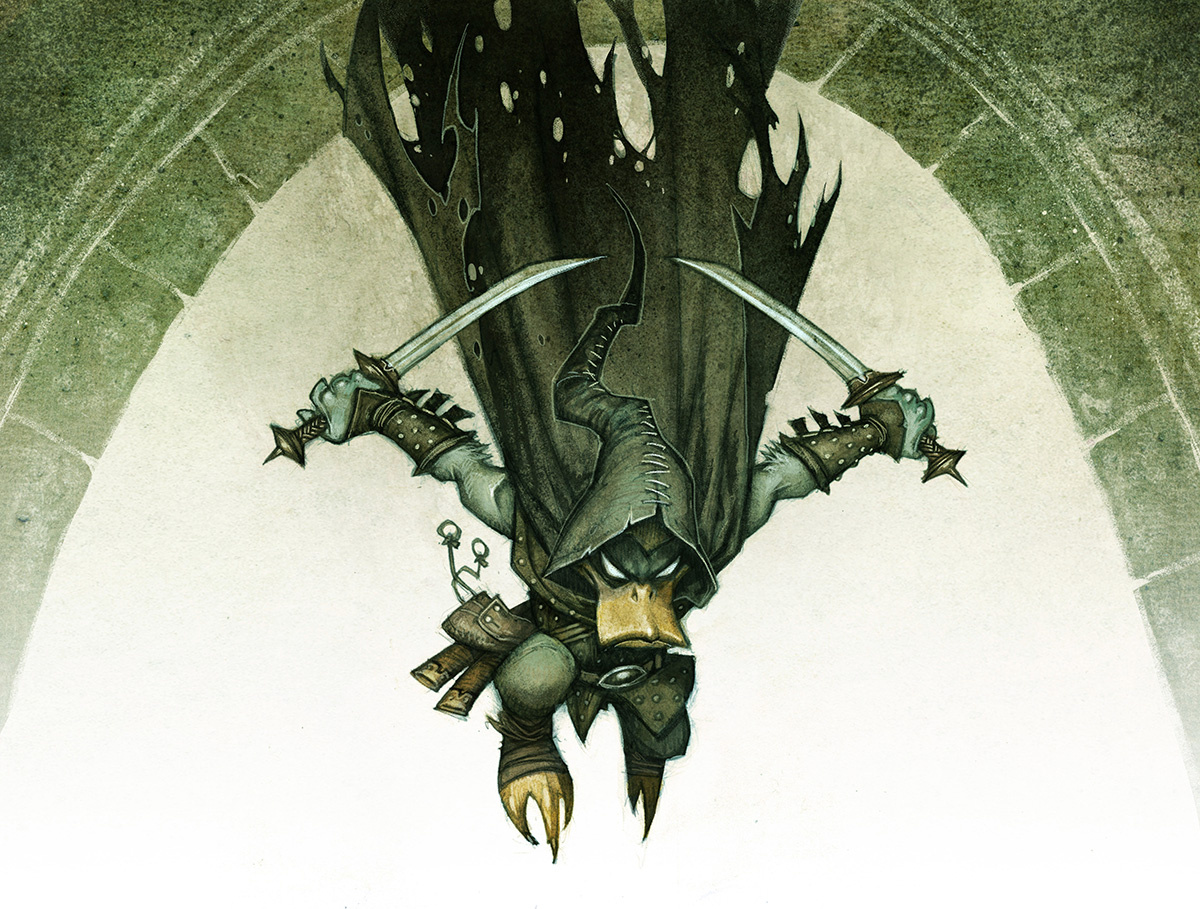Today Free League announced an English version of Drakar och Demoner, the seminal fantasy RPG in Sweden. The original dwarfed D&D in the Scandinavian market during the 80s and remains massively popular still in this day.

A new edition of Sweden's first RPG Drakar och Demoner, finally in English after 40 years – the Kickstarter begins August 30
We are thrilled to announce the Dragonbane RPG, a brand new edition of Sweden's first and biggest tabletop roleplaying game Drakar och Demoner, now to be published in English for the first time.
Dragonbane / Drakar och Demoner is coming to Kickstarter August 30.
Sign up here to be notified the moment the campaign starts:
Drakar och Demoner was originally launched in Sweden in 1982. Now, we celebrate its 40th anniversary with a brand new and reimagined edition, with one foot firmly planted in the heritage of decades of Swedish gaming and the other in the modern and innovative game design for which Free League is known worldwide.
There has been talk about the "Swedish invasion" in the RPG world in the last few years, with award-winning titles like Mutant: Year Zero, Tales From the Loop, Symbaroum, Forbidden Lands, and MÖRK BORG. Drakar och Demoner is the game that started it all. And now, for the first time, the game will also be available to an international audience, under the English title Dragonbane.
Drakar och Demoner / Dragonbane has art by acclaimed illustrator Johan Egerkrans (Vaesen – Nordic Horror Roleplaying and art books Vaesen, Norse Gods, The Undead, Dragons) and lead game design by Tomas Härenstam (Mutant: Year Zero, Forbidden Lands, ALIEN RPG, Twilight: 2000 4th Edition, and the upcoming Blade Runner RPG). The team of contributing writers include the elite of the Swedish tabletop RPG industry as well as acclaimed historical fiction author Niklas Natt och Dag (1793 The Wolf and the Watchman).
For a glimpse at the fantasy odyssey to come, check out the artwork from the upcoming core boxed set in this newsletter. More details about Drakar och Demoner / Dragonbane will be shared via our social media accounts throughout the weeks leading up to launch.
Drakar och Demoner / Dragonbane is a classic fantasy RPG full of magic, mystery, and adventure. This new edition is designed from the ground up to facilitate fast and furious play, with very little prep time and adventures that are a breeze to run.
Although a toolbox allowing you to tell fantasy stories of all kinds, Drakar och Demoner / Dragonbane is a game with room for laughs at the table and even a pinch of sillyness at times – while at the same time offering brutal challenges for your adventurers.
We call this playstyle "mirth and mayhem roleplaying" – great for long campaigns but also perfect for a one-shot if you just want to have some quick fun at the table for a night. The core set will include at least one complete adventure and we hope to unlock many more as stretch goals, offering a complete campaign to play even in the core game set.
A new edition of Sweden's first RPG Drakar och Demoner, finally in English after 40 years – the Kickstarter begins August 30
We are thrilled to announce the Dragonbane RPG, a brand new edition of Sweden's first and biggest tabletop roleplaying game Drakar och Demoner, now to be published in English for the first time.
Dragonbane / Drakar och Demoner is coming to Kickstarter August 30.
Sign up here to be notified the moment the campaign starts:
Drakar och Demoner was originally launched in Sweden in 1982. Now, we celebrate its 40th anniversary with a brand new and reimagined edition, with one foot firmly planted in the heritage of decades of Swedish gaming and the other in the modern and innovative game design for which Free League is known worldwide.
There has been talk about the "Swedish invasion" in the RPG world in the last few years, with award-winning titles like Mutant: Year Zero, Tales From the Loop, Symbaroum, Forbidden Lands, and MÖRK BORG. Drakar och Demoner is the game that started it all. And now, for the first time, the game will also be available to an international audience, under the English title Dragonbane.
Drakar och Demoner / Dragonbane has art by acclaimed illustrator Johan Egerkrans (Vaesen – Nordic Horror Roleplaying and art books Vaesen, Norse Gods, The Undead, Dragons) and lead game design by Tomas Härenstam (Mutant: Year Zero, Forbidden Lands, ALIEN RPG, Twilight: 2000 4th Edition, and the upcoming Blade Runner RPG). The team of contributing writers include the elite of the Swedish tabletop RPG industry as well as acclaimed historical fiction author Niklas Natt och Dag (1793 The Wolf and the Watchman).
For a glimpse at the fantasy odyssey to come, check out the artwork from the upcoming core boxed set in this newsletter. More details about Drakar och Demoner / Dragonbane will be shared via our social media accounts throughout the weeks leading up to launch.
Drakar och Demoner / Dragonbane is a classic fantasy RPG full of magic, mystery, and adventure. This new edition is designed from the ground up to facilitate fast and furious play, with very little prep time and adventures that are a breeze to run.
Although a toolbox allowing you to tell fantasy stories of all kinds, Drakar och Demoner / Dragonbane is a game with room for laughs at the table and even a pinch of sillyness at times – while at the same time offering brutal challenges for your adventurers.
We call this playstyle "mirth and mayhem roleplaying" – great for long campaigns but also perfect for a one-shot if you just want to have some quick fun at the table for a night. The core set will include at least one complete adventure and we hope to unlock many more as stretch goals, offering a complete campaign to play even in the core game set.

